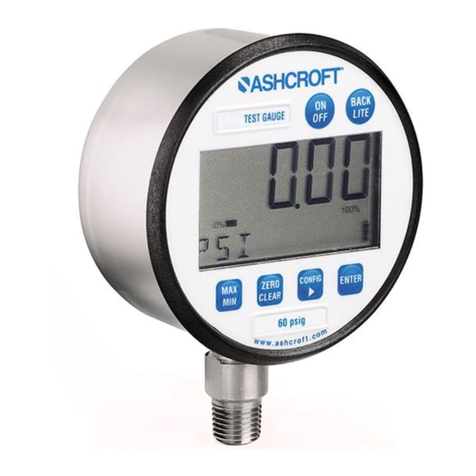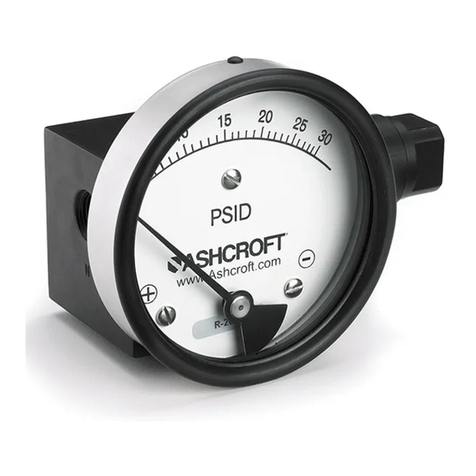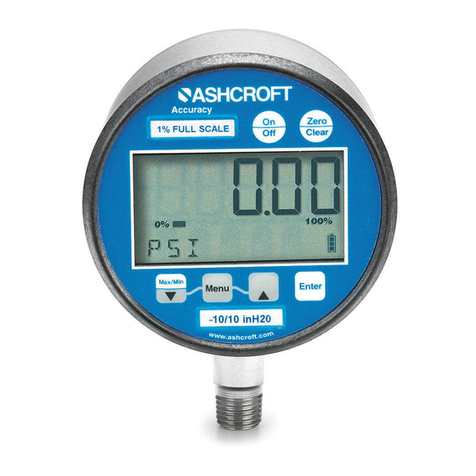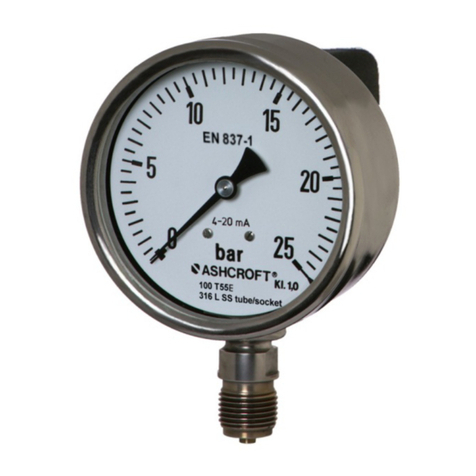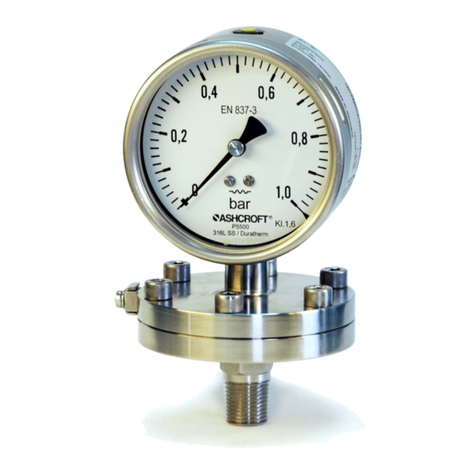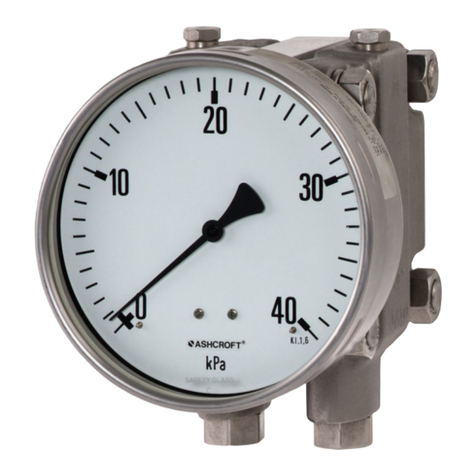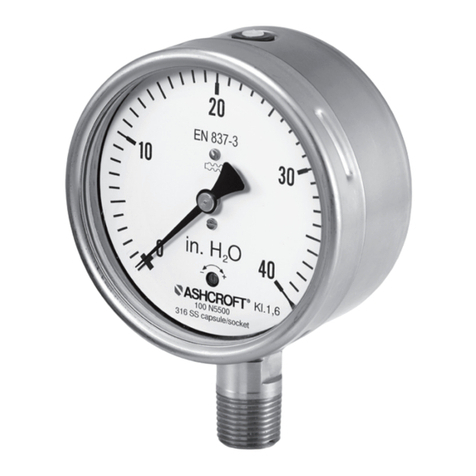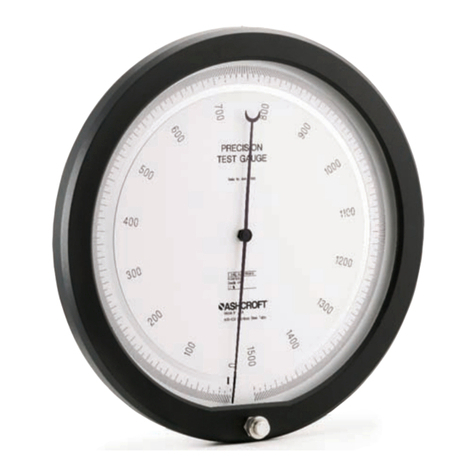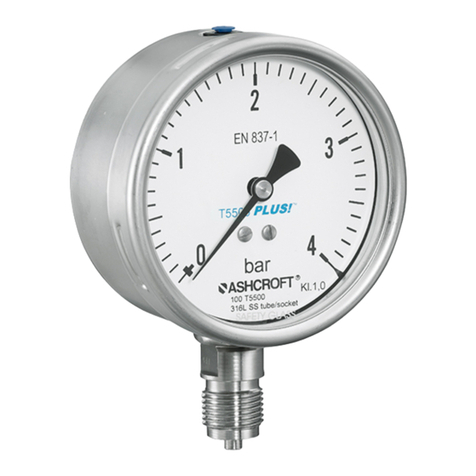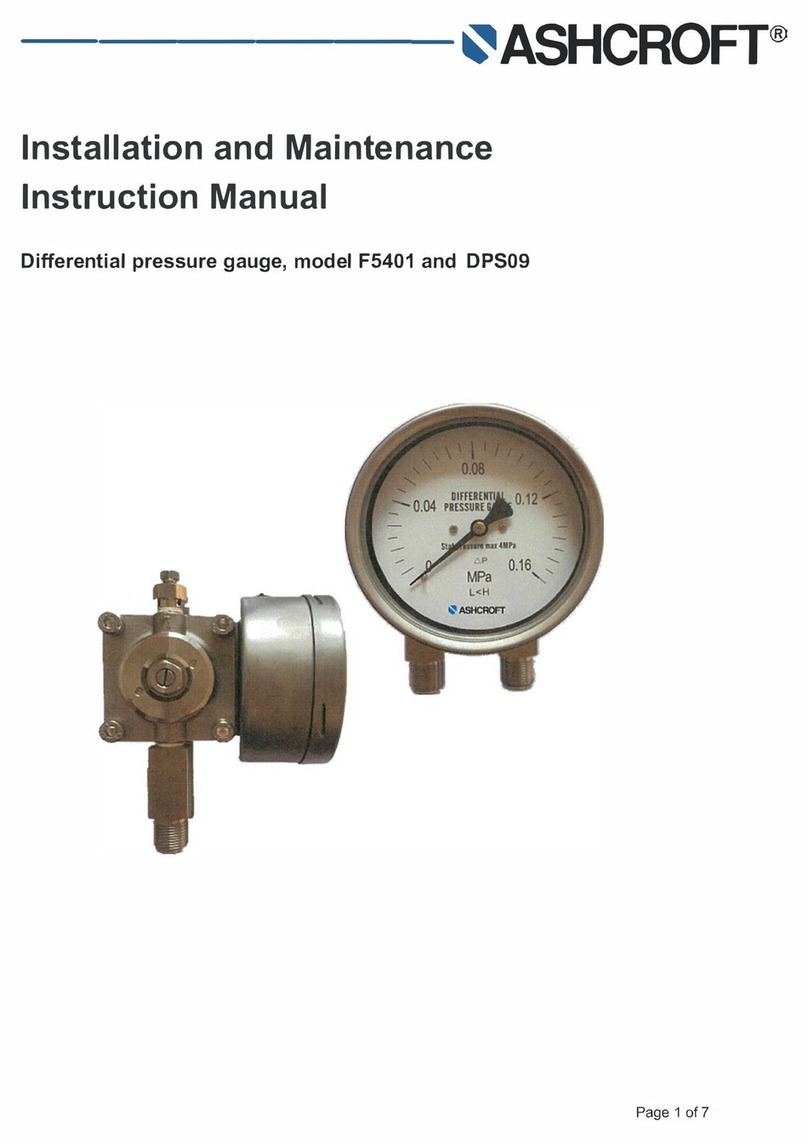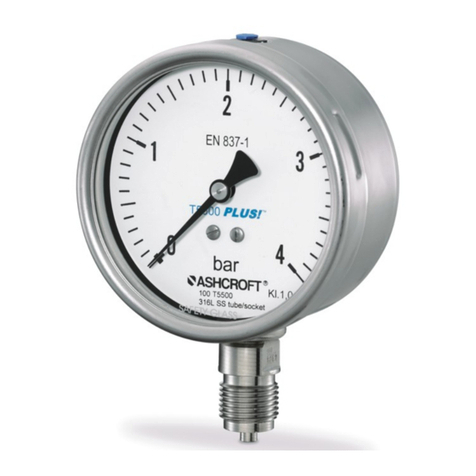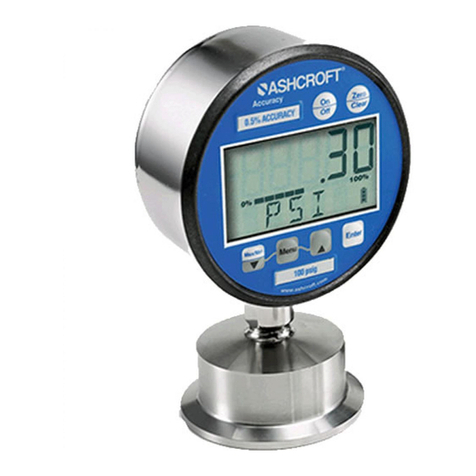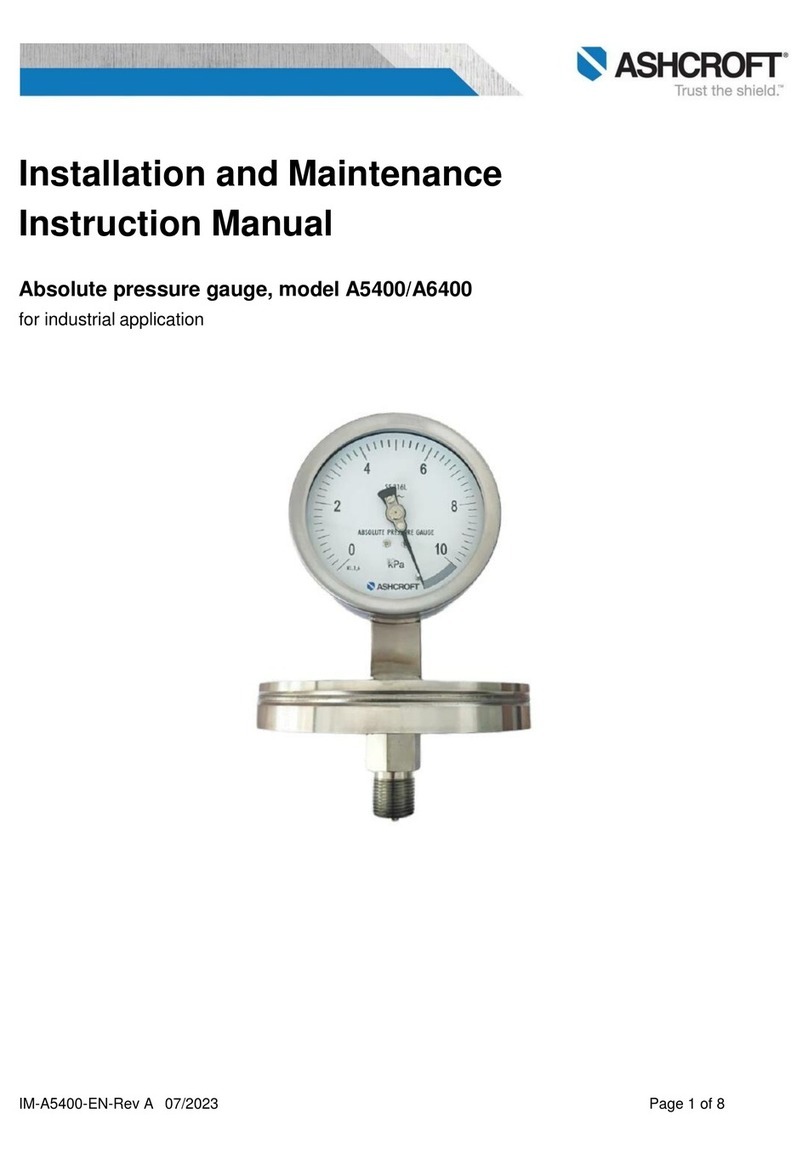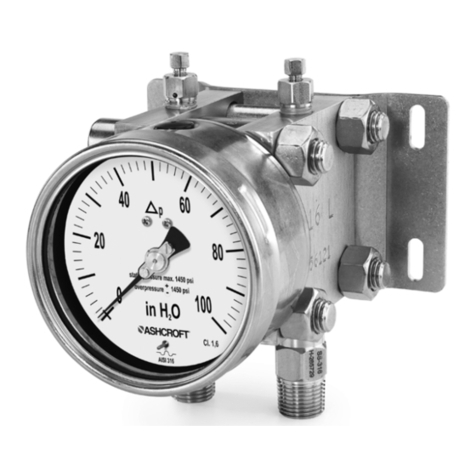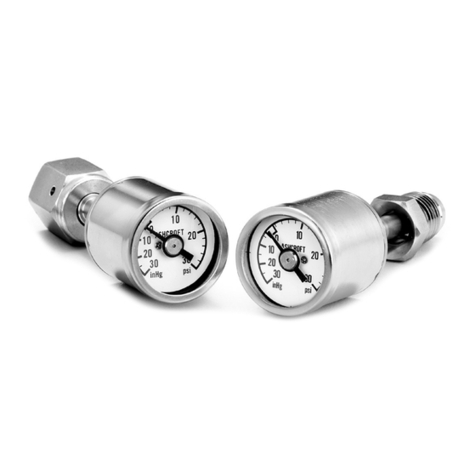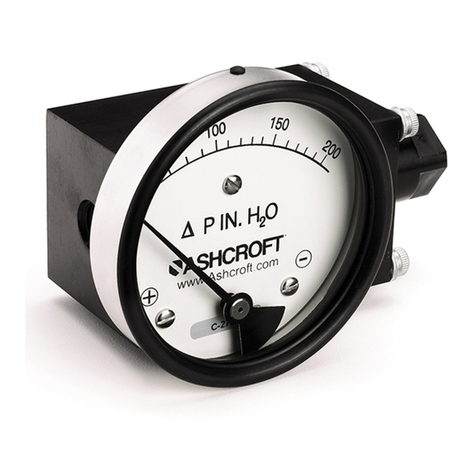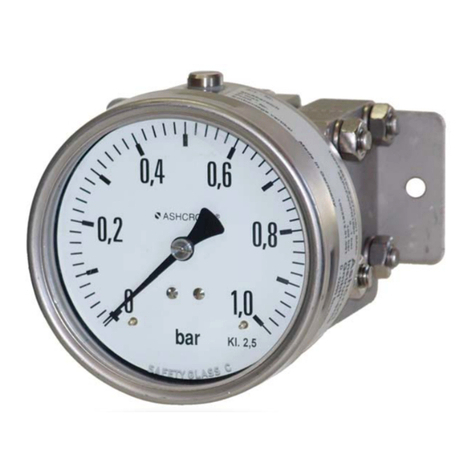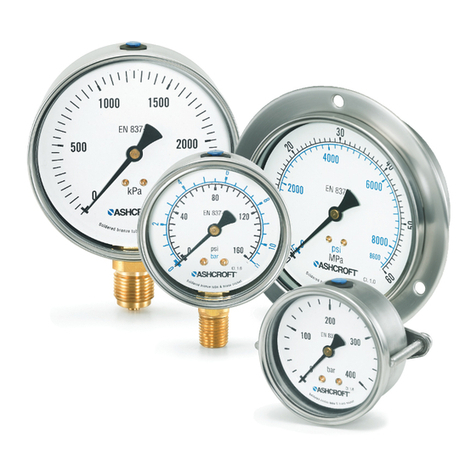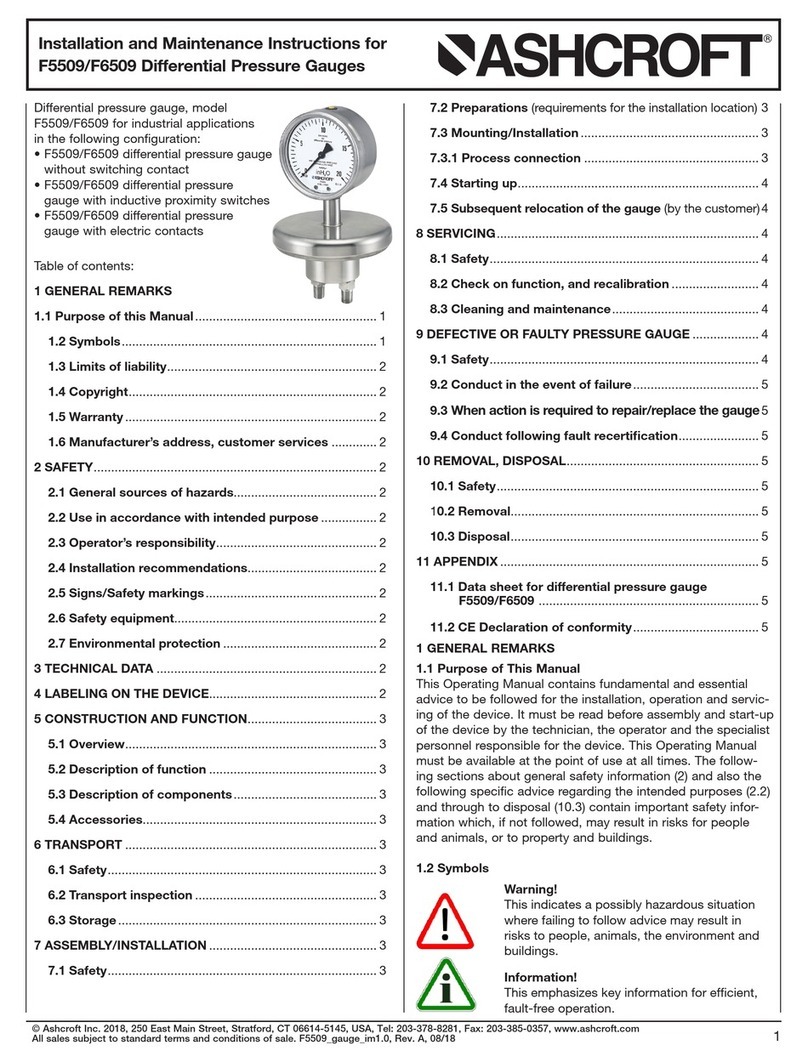
Installation and Maintenance Instructions
for the TC Tank Level Gauge
© Ashcroft Inc. 2020, 250 East Main Street, Stratford, CT 06614-5145, USA, Tel: 203-378-8281, Fax: 203-385-0357, www.ashcroft.com
All sales subject to standard terms and conditions of sale. Tank_Content_Gauge_im_RevA_(I&M008-10279)_07-23-20 4
ISSUES CHECKPOINTS CAUSES SOLUTIONS
The gauge indicates a value above
that which is known to be in the
tank.
1. Verify that tank dimensions,
specific gravity and position of the
seal housing are in accordance
with specifications.
2. Confirm that the seal housing is
not clogged with congealed liquid
or sludge.
3. Confirm tank ventilation has not
been blocked.
4. Check that the pointer doesn’t
touch the dial or glass window.
1. Gauge assembly is mounted to the
incorrect tank.
2. The dimensions, specific gravity or
the position of the seal housing
had been altered/changed.
3. Congealed liquid or sludge on the
inside of the tank..
1. Install the gauge assembly to the
proper tank.
2. Clean the tank ventilation and/or
seal housing.
3. Contact Ashcroft if the above
measures do not remedy the
issue.
The gauge indicates a value below
that which is known to be in the
tank.
1. Verify that tank dimensions,
specific gravity and position of the
seal housing are in accordance
with specifications.
2. Verify that the capillary line has
not been damaged or fractured.
3. Confirm that the seal housing is
not clogged with congealed liquid
or sludge.
4 Confirm that the indicating
pointer registers in accordance to
the tank when empty.
5. Check that the seal housing has
not been fitted near strong flow,
due to liquid movement or pump
suction in the tank.
1. Gauge assembly is mounted to the
incorrect tank.
2. The dimensions, specific gravity
or the position of the seal housing
had been altered/changed.
3. Too much mechanical force had
been exerted on the capillary line.
4. Congealed liquid or sludge on the
inside of the tank.
5. Placement of the seal housing is
not optimal.
1. Install the gauge assembly to the
proper tank.
2. Clean the tank ventilation and/or
seal housing.
3. Reinstall the seal housing to a less
turbulent position on the tank.
4. Replace the capillary line.
5. Contact Ashcroft if the above
measures do not remedy the
issue.
The pointer gradually returns to zero. 1. Confirm that the seal housing is
not clogged with congealed liquid
or sludge.
2. Check that the seal housing has
not been fitted near strong flow,
due to liquid movement or pump
suction in the tank.
1. Congealed liquid or sludge on the
inside of the tank.
2. Placement of the seal housing
installation is not optimal.
1. Clean the tank ventilation and/or
seal housing.
2. Reinstall the seal housing to a less
turbulent position on the tank.
3. Contact Ashcroft if the above
measures do not remedy the
issue.
The pointer shows no movement
with variation in the liquid level.
1. Confirm that the seal housing is
not choked with congealed liquid
or sludge.
2. Check that the seal housing has
not been fitted near strong flow,
due to liquid movement or pump
suction in the tank.
3. Check that the capillary line has
not been damaged or fractured.
1. Congealed liquid or sludge on the
inside of the tank.
2. Placement of the seal housing
installation is not optimal.
3. Too much mechanical force had
been exerted on the capillary line.
1. Clean the tank ventilation and/or
seal housing.
2. Reinstall the seal housing to a less
turbulent position on the tank.
3. Replace the capillary line.
4. Contact Ashcroft if the above
measures do not remedy the
issue.
The pointer starts to make a second
sweep of the scale.
1. Verify that tank dimensions,
specific gravity and position of the
seal housing are in accordance
with specifications.
2. Confirm tank ventilation has not
been blocked.
1. The dimensions, specific gravity
or the position of the seal housing
had been altered/changed.
2. Congealed liquid or sludge on the
inside of the tank.
1. Clean the tank ventilation and/or
seal housing.
2. Contact Ashcroft if the above
measure do not remedy the issue.
Indication is erratic, unstable and
varies with temperature.
1. Confirm that the seal housing is
not clogged with congealed liquid
or sludge.
1. Congealed liquid or sludge on the
inside of the tank.
1. Clean the tank ventilation and/or
seal housing.
2. Contact Ashcroft if the above
measures do not remedy the
issue.
